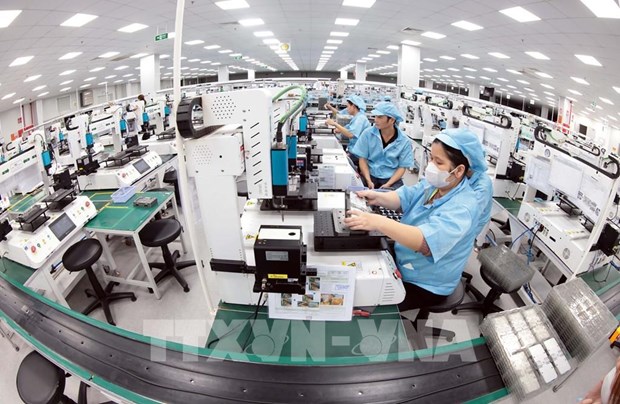.jpg) Economy
Economy

 |
| The Minister of Planning and Investment, Nguyễn Chí Dũng speaks at the Việt Nam Sustainability Forum in Hà Nội yesterday. — VNA/VNS Photo |
HÀ NỘI — Poorly implemented economic reforms have left Việt Nam with a distorted market still struggling to overcome the shadow of inefficient State-owned enterprises, an economist said on Thursday.
“It seems like Việt Nam loves the market, but is somehow also scared of it,” head of the Central Institute for Economic Management, Nguyễn Đình Cung, said at the Việt Nam Sustainability Forum in Hà Nội.
The two-day forum, co-organised by the Association of Vietnamese Scientists and Experts, and the Academy of Policy and Development, attracted about 100 policy makers, academics and entrepreneurs from Việt Nam and overseas. They discussed visionary initiatives for sustainable development of Việt Nam.
The Minister of Planning and Investment, Nguyễn Chí Dũng, said that the country managed to achieve an impressive growth rate of 6.8 per cent last year and gained remarkable success in restructuring the economy, however, he admitted that many obstacles were unsolved.
“GDP per capita and average productity is still relatively low, while the wealth gap is set to widen together with environmental issues. The fourth industrial revolution and the international economic integration are all challenges,” Dũng said.
It is estimated Việt Nam will need an average gross domestic growth (GDP) of 8 per cent, and an average productivity growth rate of 7 per cent for at least 15 to 20 years to catch up with advanced economies in the world, Cung said. The path to economic growth was only through an open market, which Việt Nam was struggling to become.
“Việt Nam so far has not only failed to reduce the State-owned sector and expand the private one, but couldn’t shift the informal economic sector to the formal one,” Cung said. “In other words, it (Việt Nam) can’t tranform economic resources from being inefficient to efficient.”
The forum was told that the Vietnamese workforce was also at risk in the new times of digital world and automation. In the face of the fourth industrial revolution already in motion, education and skill training become even more important to Việt Nam’s sustainable development, said Andreas Schkeicher, head of the Directorate for Education and Skills under the Organisation for Economic Co-operation and Management.
He warned that the rapid change of technologies would cost the jobs of millions of people who did not have the right skills.
Research by the World Economic Forum in 2016 predicted that more than five million jobs in 15 of the world’s largest economies, including ASEAN, would be lost by 2020 through automation in the fourth industrial revolution.
The job loss to automation would be inevitable, said Olivier Brechard, director of WebForce3 web-development school, but the fourth industrial revolution would also create many other jobs that required new skills.
“We are uncertain what jobs will be lost and what new ones will be created in the future,” Brechard said.
“Workers have to keep training and retraining to keep up with any changes, especially when most jobs will soon integrate with digital skills.” — VNS


.jpg)






